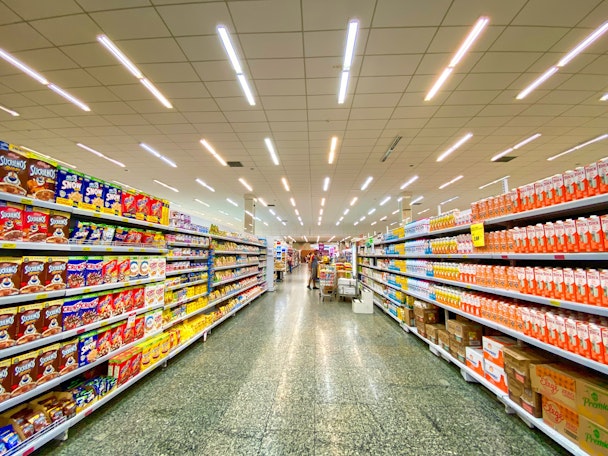5 strategies to help retailers adapt to omnichannel shopping
Design them however you like – customers will make their own journeys, including going from online to physical touchpoints, and back again. Here, Vertical Leap’s Lee Wilson shares tips for managing that reality.

How can retailers keep pace with the often varied path to purchase? / Nathália Rosa via Unsplash
Omnichannel shopping is changing how people discover and buy products. More customer journeys are taking consumers through a mix of online and offline interactions with brands, bringing both new opportunities and challenges for retailers with physical stores.
The big takeaway from Google’s latest insights into omnichannel marketing is that 60% of consumers in the UK like to visit stores to see or touch products even if they plan to buy online. This is a higher percentage than last year.
Shoppers are increasingly finding products online and then visiting stores to see the items before making a purchase.
Stores with a physical presence need to understand that consumers may discover a product with one brand, visit their store to view it and, potentially, buy online from a completely different retailer.
Shoppers don’t necessarily intend to buy from the brand they visit in-store, but these physical store visits give you the opportunity to change that. They’re potential leads that retailers may not have access to in an online-only customer journey.
To overcome the challenges of omnichannel customer journeys and take advantage of the opportunities they bring, retailers need to adapt their strategies for in-store visits. But how?
1. Help customers find you (online & in the real world)
Build your organic search presence to help customers find you online and reinforce it with a solid local SEO strategy. Make sure that customers can find your store(s) by completing your Google Business Profile and any listings you have on directory sites.
Always keep your opening times up to date so people know when they can visit. You can also show which services you provide to customers, such as in-store pick-ups and deliveries to make the purchase as convenient as possible.
Advertisement
2. Use local inventory ads to show you have products in stock
To really entice in-store visits, you can use local inventory ads to show shoppers that you have the items they’re looking for in stock. This is the ideal ad format for people who want to see or touch a product in-store before making a final purchase.
Shoppers can use local inventory ads to browse in-store inventory, get store hours, get directions to stores, and anything else they need to pay a visit.
Advertisement
3. Use Performance Max campaigns to reach more shoppers
Performance Max campaigns for store goals in Google Ads can also help you drive more visits. This campaign format is designed specifically to help consumers decide how and when to visit your store.
This campaign format can maximize visibility by promoting your store(s) across Google Search, Maps, YouTube, Gmail and the Google Display Network – all from a single campaign.
You can provide Google with your store locations, campaign budget and ad assets. Then, Google’s AI system optimizes bids, ad placements and asset combinations to promote your stores on the most effective channels (Search, Maps, etc.).
4. Optimize bids for store visits
In Google Ads, you can also optimize your campaign bids for store visits or in-store purchases. These bidding tools help retailers achieve their goals and get the most from their ad budgets. They use Google’s Smart Bidding technology to automatically optimize your bids, using extensive data from previous customer journeys.
With these insights, Google can optimize your bids to maximize visibility and conversion goals with users who show the same behavioral patterns as other consumers who completed the same conversion goal.
This is a great feature for smaller retailers who might not have the time or resources to manually track and optimize their own bidding strategies. According to data from Google, Danish retailer Ilva increased offline sales by +20% using these automated bidding features.
Be careful though: it’s always advisable not to let the Google AI just go off and do its thing without keeping a check on what’s happening to ensure it is still aligned with your objectives.
Suggested newsletters for you
5. Optimize the in-store experience for omnichannel conversions
Getting online leads to pay you a visit in-store doesn’t mean they’re necessarily going to buy from you. They may have already found a cheaper alternative online and simply want to check the product out before making the purchase. You need to show these customers that buying from you – whether it’s in-store or online – is the best option for them.
For example, you might introduce a price-matching policy for in-store purchases to remove the benefit of buying elsewhere.
Alternatively, you could add value to the in-store experience by showcasing the quality of your customer services. You might include free warranties, scheduled delivery times, installation services or anything that makes you the better alternative to online retailers.
As store visits play a growing role in multichannel purchases, they become a new battleground for winning (or losing) sales.
Content by The Drum Network member:

Vertical Leap
We are an evidence-led search marketing agency that helps brands get found online, drive qualified traffic to their websites and increase conversions/sales.
To...

